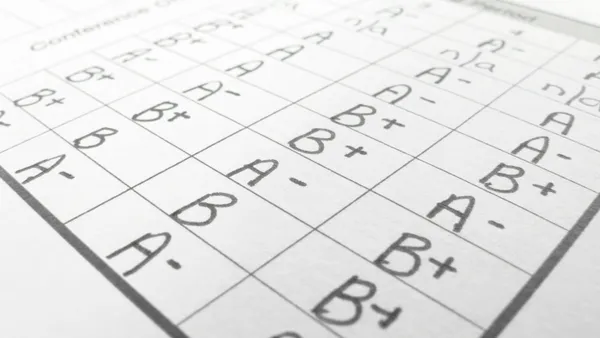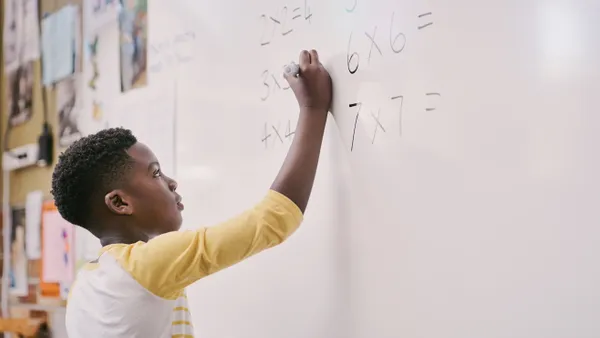Dive Brief:
-
Students attending U.S. Department of Defense schools spent more time on average taking standardized tests in 2022-23 than students in traditional public schools, according to a new U.S. Government Accountability Office report.
-
While students in traditional K-12 public schools spent an average of about 16 school days taking standardized tests, students in DOD schools spent an average of 24 days. Individual DOD school averages ranged between 15 and 38 days.
-
The greatest difference in average hours spent on standardized testing came in grades 3-5, followed by grades 9-12. The study compared students attending DOD schools to students in nine school districts near military bases.
Dive Insight:
Department of Defense schools serve some 66,000 pre-K to grade 12 students in about 160 schools across nine U.S. states and territories, as well as 11 other countries. Their students are often highly mobile, as they're primarily children of active military members or DOD civilian employees and contractors.
While the DOD schools in the study spent more hours, on average, dedicated to standardized testing, the schools don't factor the scores into school performance ratings or teacher compensation, according to DOD officials. Instead, the results are used mostly to improve instruction.
Tying high stakes tests to school and teacher outcomes was already a controversial issue among public school educators and leaders prior to the pandemic, and COVID-19 only amplified calls to detangle the two.
When school buildings shut down in spring 2020, standardized assessments were postponed nationwide. Some places renegotiated teacher contracts to reflect the change, and states nationwide put school support and improvement identification processes on pause.
Colleges' decisions to waive SAT or ACT requirements further brought into question the necessity of standardized tests.
While state and federal assessment experts anticipated the pandemic would trigger a more permanent shift away from standardized tests, that has largely not been the case.
At the same time, educators and public officials have lamented last year's poor showing on the National Assessment of Educational Progress — the first NAEP results since the start of the pandemic. The results showed historic declines in 4th- and 8th-grade math and reading scores for public school students.
By contrast, DOD students, on average, ranged between 15 to 23 points higher than all corresponding national average scores on the 2022 NAEP reading and math tests. Their scores either plateaued or even increased, whereas national average scores declined, according to a 2022 news release from the Defense Department.
Although standardized exams like NAEP and federally required state assessments continue, the pandemic has led to a greater emphasis on interim and diagnostic testing.
In one of the most high-profile examples, Montana in August scored a rare federal assessment waiver that would allow through-year assessments beginning in 2024-25 instead of federally mandated annual assessments.













